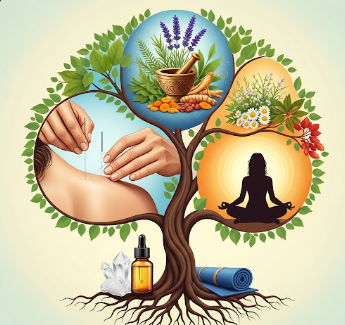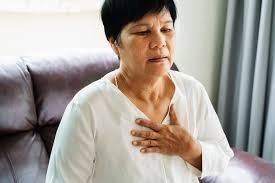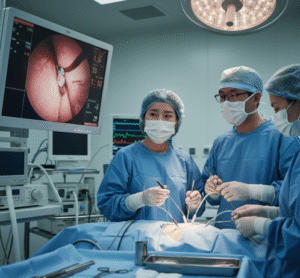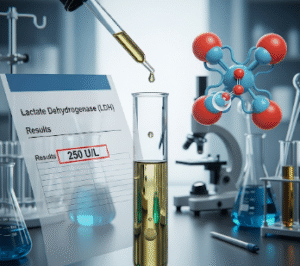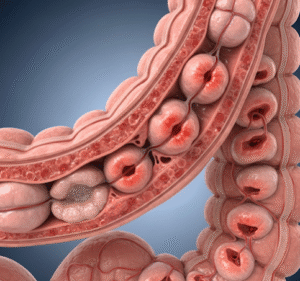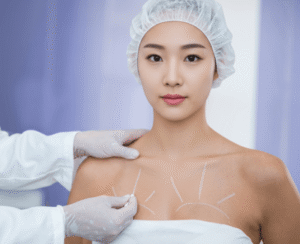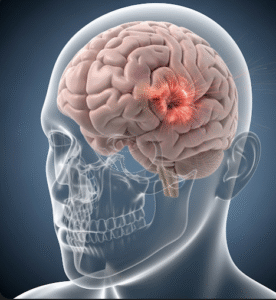Overview
Complementary and Alternative Medicine (CAM) refers to a diverse range of healthcare practices, products, and therapies that are not traditionally part of conventional Western medicine. While complementary medicine is used alongside standard treatments, alternative medicine is used instead of conventional therapies.
Importance of CAM:
- Offers holistic approaches to patient health, including physical, mental, and spiritual well-being.
- Provides non-pharmacological interventions for chronic conditions, stress, and pain.
- Supports preventive care, health promotion, and overall quality of life.
- Integrates with conventional medicine to enhance effectiveness and reduce side effects.
In South Korea, CAM is increasingly popular, with practices such as traditional Korean medicine (Hanbang), acupuncture, herbal remedies, and meditation being widely recognized and regulated for safety and efficacy.
Why It’s Done
CAM is pursued for various reasons, from symptom management to disease prevention and wellness promotion.
Common reasons include:
- ➤ Chronic pain management: Arthritis, back pain, migraines.
- ➤ Stress and anxiety reduction: Mind-body therapies, meditation, and yoga.
- ➤ Immune support and general wellness: Herbal medicine, nutrition therapy.
- ➤ Adjunct to conventional treatment: Reduce chemotherapy side effects, improve recovery, or enhance quality of life.
- ➤ Preventive care: Lifestyle modifications, dietary supplements, and exercise-based therapies.
- ➤ Improving mental and emotional health: Counseling, energy therapies, and relaxation techniques.
Benefits for patients:
- ✔️ Holistic care addressing mind, body, and spirit.
- ✔️ May reduce dependency on pharmaceuticals and their side effects.
- ✔️ Supports long-term health, well-being, and resilience.
- ✔️ Provides culturally acceptable and personalized care options.
Alternatives
In many cases, CAM serves as a complement rather than an alternative. However, alternatives to CAM include:
- ➤ Conventional medicine alone: Standard drug therapies, surgery, or hospital-based interventions.
- ➤ Evidence-based integrative medicine: Combines the best of conventional medicine with select CAM approaches.
- ➤ Lifestyle modification alone: Diet, exercise, sleep, and stress management.
- ➤ Psychological interventions: Cognitive-behavioral therapy, counseling, and psychotherapy for mental health.
Key point: CAM is most effective when used responsibly alongside conventional care, ensuring safety and measurable benefit.
Preparation
Preparation for CAM therapies involves assessment, consultation, and planning.
Steps include:
- ✅ Medical evaluation: Identify underlying conditions and potential interactions with conventional treatment.
- ✅ Therapy selection: Choose evidence-based CAM modalities suitable for the patient.
- ✅ Lifestyle review: Diet, exercise, stress levels, and habits are assessed.
- ✅ Informed consent: Understand therapy methods, expected outcomes, and risks.
- ✅ Monitoring plan: Track progress, response, and side effects.
Important: Preparation ensures safety, efficacy, and integration with ongoing medical treatments.
How It’s Done
CAM encompasses multiple modalities, each with unique procedures.
Major categories include:
- Biologically-based therapies:
- Herbal remedies, vitamins, probiotics, and dietary supplements.
- Administered orally, topically, or as teas and decoctions.
- Mind-body interventions:
- Meditation, yoga, tai chi, guided imagery, and mindfulness.
- Typically practiced in guided sessions or self-practice routines.
- Manipulative and body-based methods:
- Chiropractic care, massage therapy, osteopathy, and reflexology.
- Manual techniques applied to muscles, joints, and soft tissue.
- Energy therapies:
- Reiki, therapeutic touch, and acupuncture (also overlaps with traditional medicine).
- Focused on restoring energy balance and supporting healing.
- Whole medical systems:
- Traditional Korean Medicine (Hanbang), Ayurveda, Naturopathy, Homeopathy.
- Include structured diagnostic and treatment approaches integrating lifestyle, diet, and therapy.
Duration and frequency: Varies widely from a single session (e.g., acupuncture) to daily practice (e.g., meditation).
Key point: CAM therapies are personalized, non-invasive, and can be integrated with conventional medical care.
Recovery & Follow-Up
Recovery and benefits from CAM therapies depend on the specific modality and patient condition.
Immediate effects:
- Relief from pain, stress reduction, and improved mood.
- Relaxation, improved sleep, and reduced tension in body-based therapies.
Short-term care:
- Follow therapy schedules consistently for maximum benefit.
- Track symptoms, side effects, and progress.
- Maintain communication with conventional healthcare providers.
Long-term outcomes:
- Enhanced physical health, mental well-being, and resilience.
- May reduce chronic disease burden and improve overall quality of life.
- Supports preventive health measures and sustainable lifestyle improvements.
Important: Regular monitoring ensures therapeutic effectiveness and safety when combined with conventional treatment.
Possible Complications
CAM is generally safe but may carry risks if improperly administered or used inappropriately.
- ⚠️ Allergic reactions: To herbal remedies or supplements.
- ⚠️ Interactions with conventional medications: Especially blood thinners, chemotherapy, or cardiovascular drugs.
- ⚠️ Infections: Rare, mainly from improperly sanitized equipment in therapies like acupuncture.
- ⚠️ Delayed diagnosis or treatment: Exclusive use of alternative medicine for serious conditions can be harmful.
- ⚠️ Physical injury: From manual therapies if improperly applied.
In South Korea, CAM practices are regulated, licensed, and monitored, particularly for acupuncture, herbal medicine, and traditional Korean therapies, reducing the risk of complications.
Treatment Options / Clinical Relevance in Korea
South Korea has a strong tradition of integrating CAM with conventional medicine, especially in hospitals and wellness centers.
Key features:
- 🏥 Traditional Korean Medicine (Hanbang): Acupuncture, moxibustion, herbal medicine, cupping therapy.
- 🏥 Mind-body programs: Meditation, yoga, and mindfulness integrated into wellness centers.
- 🏥 Licensed practitioners: Strict regulations for acupuncture, herbal prescriptions, and manipulative therapies.
- 🏥 Integrated care: Hospitals often combine conventional oncology, pain management, or rehabilitation with CAM therapies.
- 🏥 Preventive and chronic disease management: CAM is used to support recovery, reduce side effects, and improve quality of life.
Notable centers in Korea:
- Kyung Hee University Hospital – Traditional Korean Medicine and acupuncture clinics
- Jaseng Hospital of Korean Medicine – Integrative spine and musculoskeletal care
- Asan Medical Center – Integrative oncology and supportive CAM programs
- Private wellness centers – Meditation, yoga, and stress management programs
Highlights in Korea:
- ✔️ CAM is legally regulated and integrated into mainstream healthcare.
- ✔️ Provides holistic support for chronic conditions, stress, and wellness.
- ✔️ Enhances conventional medical treatments and patient satisfaction.
- ✔️ Offers personalized therapies based on diagnosis, condition, and cultural context.
Highlights
- ➤ CAM includes practices outside conventional Western medicine used for wellness, prevention, or adjunct therapy.
- ➤ Indicated for chronic pain, stress, wellness promotion, chronic disease support, and adjunct therapy.
- ➤ Alternatives include conventional medicine alone, integrative medicine, lifestyle modification, and psychological interventions.
- ➤ Preparation involves medical evaluation, therapy selection, lifestyle review, informed consent, and monitoring.
- ➤ Procedures vary by therapy – acupuncture, herbal medicine, meditation, massage, or energy-based methods.
- ➤ Recovery focuses on symptom relief, monitoring, and long-term quality of life improvements.
- ➤ South Korea provides safe, regulated, and integrated CAM options with licensed practitioners and hospital-based programs.

